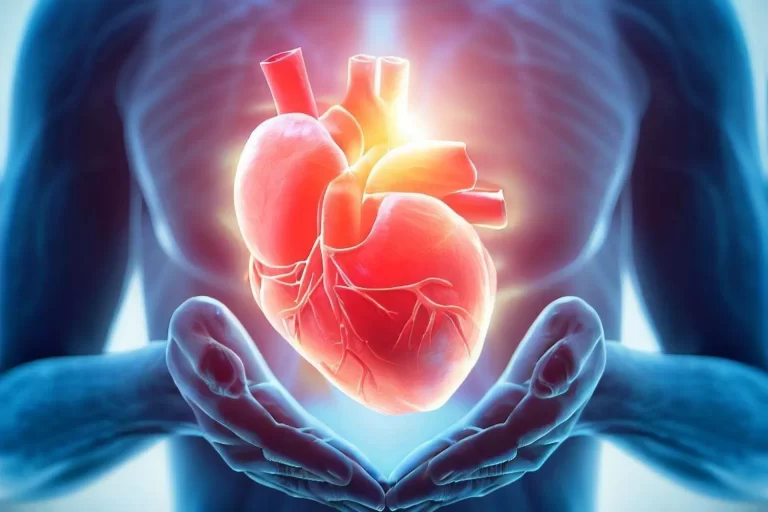What is Diabetes?
Diabetes is a severe metabolic disorder characterized by elevated blood glucose (blood sugar) levels. Glucose is a primary energy source for the body’s cells, and insulin, a hormone produced by the pancreas, helps regulate glucose levels in the blood. When the body cells cannot produce enough insulin or effectively use insulin, this can lead to diabetes.
In short, It is a condition where your body can’t properly regulate blood sugar levels.
Science behind diabetes:
To know how diabetes occurs, knowing what insulin is and how insulin works in the body is essential.
In type 1 diabetes, your body’s immune system disrupts the cells of the pancreas that produce insulin.
Type 2 diabetes, it’s a bit more complicated. In this case, your cells stop responding to insulin appropriately, which is called insulin resistance, and your pancreas can’t produce sufficient insulin to keep up with your body’s demands.
Understanding how diabetes happens is important because it helps us determine how to prevent and treat it.
What role of Insulin play in maintaining blood sugar levels in the body?
Insulin is a critical hormone the pancreas produces that regulates blood sugar levels. The pancreas releases insulin into the bloodstream when blood sugar levels rise after meals.

Insulin then binds to cell receptors, signaling them to take up glucose from the bloodstream. This glucose is used immediately for energy or stored as glycogen in the liver and skeletal muscles for future use.
Insulin helps to prevent the breakdown of glycogen in the liver, which can release glucose into the bloodstream when it is not needed. By preventing this process, insulin helps to keep blood sugar levels within a normal range.
In people with diabetes, pancreatic cells don’t work properly and fail to produce enough insulin, leading to high blood sugar levels. Left untreated can cause various health problems, including nerve damage, kidney damage, and vision loss.
What are the types of diabetes?
There are several types of diabetes:
Type 1 diabetes: called juvenile-onset diabetes, typically develops in children and young adults. It happens when the immune system attacks and destroys the beta B-cells in the pancreas responsible for producing insulin. Without that hormone, blood glucose levels up and can cause serious complications.
Type 2 diabetes: also called adult-onset diabetes, is the most common form of diabetes. It occurs when the body cells become resistant to the effects of insulin or when the pancreatic B-cells can’t produce enough insulin to keep up with the body’s needs.
Gestational diabetes: develops in some pregnant women and usually resolves after childbirth. That typically occurs when the body cannot produce sufficient insulin to meet the increased demands of pregnancy. Women who experience gestational diabetes are susceptible to the occurrence of type 2 diabetes in the future.
Monogenic diabetes: is caused by mutations in a single gene, and cystic fibrosis-related diabetes is a complication of cystic fibrosis.
Each type of diabetes has different diagnostic criteria and treatment strategies.
What are Prediabetes?
Prediabetes is an early stage when blood sugar levels are higher than usual but not yet high enough to be known as type 2 diabetes. It is often considered a warning sign that someone is at risk of developing type 2 diabetes.
Is diabetes a common disease? In which countries is it prevalent?
Diabetes is a prevalent disease affecting millions of people worldwide. According to the International Diabetes Federation, around 463 million adults of age 20-79 were living with diabetes in 2019, and the figure is increasing very fast.
The prevalence of diabetes varies by country and region, with some countries experiencing higher rates than others.
According to the same report by the International Diabetes Federation, the countries with the highest prevalence of diabetes in 2019 were:
- China: 116.4 million
- India: 77 million
- United States: 34.2 million
- Brazil: 27.9 million
- Mexico: 16.8 million
- Indonesia: 16.5 million
- Egypt: 14.6 million
- Pakistan: 14.4 million
- Japan: 10.6 million
- Bangladesh: 9.3 million
What are the early symptoms of diabetes?
The indications of diabetes can differ based on the severity of the disease and the type of diabetes.
Here are some common symptoms:
Increased thirst and urination: Increased blood sugar levels can result in the kidneys exerting more effort to filter out and absorb excess glucose, which may result in more frequent urination and heightened thirst.
Fatigue: The body may feel exhausted when cells cannot use glucose for energy due to a lack of insulin or insulin resistance.
Blurred vision: Elevated blood sugar levels can result in swelling of the lens in the eye, which can cause a loss of visual clarity and blurred vision.
Slow healing of wounds: Diabetes impair circulation and damage nerves, making it harder for the body to heal wounds.
Tingling or numbness in the limbs: High blood sugar levels can damage nerves, causing tingling or numbness in the extremities.
Weight loss: In type 1 diabetes, the body cannot use glucose for energy, so it starts to use stored fat and muscle tissue for energy instead, leading to weight loss.
Infections: High glucose levels can weaken the immune system and make it harder for the body to fight infections.
Some people with diabetes may not experience symptoms, so regular blood sugar screenings are recommended for people at risk of developing diabetes.
What are the potential causes of diabetes?
There are different causes of diabetes, depending on the type of diabetes. Here are the causes of type 1 and type 2 diabetes:
Causes of type 1 diabetes:
The cause of this type has yet to be entirely understood. Still, it is thought to be influenced by both genetic and environmental factors, including viral infections, exposure to toxins, and dietary factors.
Causes of type 2 diabetes:
Type 2 diabetes is a multifaceted disease that arises due to insulin resistance or insufficient insulin production. While the exact causes remain unclear, factors such as genetics, aging, an unhealthy diet, physical inactivity, and obesity are believed to contribute to its development.
What are the risk factors for Type-1 and 2-Diabetes?
Risk factors for type 1 diabetes:
- Family history of type 1 diabetes
- Genetics: specific genes can increase the risk of developing type 1 diabetes
- Autoimmune disorders, such as celiac disease and thyroid disease
- Viral infections, such as Coxsackie virus and cytomegalovirus
Risk factors for type 2 diabetes:
- Age
- Family history of diabetes
- Genetics
- Overweight or obesity
- Physical inactivity
- Unhealthy diet
- High blood pressure and high cholesterol levels
- Polycystic ovary syndrome (PCOS)
- Sleep apnea
What are the complications of diabetes if left untreated?
Diabetes should be taken seriously. Otherwise, it will have some harsh consequences. Here are some common complications of diabetes:
Cardiovascular disease: Elevated blood sugar levels can lead to cardiovascular disease by damaging blood vessels and increasing the risk of atherosclerosis.
Atherosclerosis is the accumulation of fatty deposits that can narrow and harden blood vessels, reducing blood flow to the heart and brain and increasing the likelihood of heart attacks and strokes.
Nerve damage: Diabetes can cause nerve damage, leading to problems such as numbness and pain in the hands or feet.
Kidney damage: The kidneys may be harmed by diabetes, potentially resulting in kidney disease or failure.
Eye damage: Diabetes can also damage the blood capillaries in the retina, leading to diabetic retinopathy, which can cause vision loss and even blindness.
Foot damage: Diabetes can lead to nerve damage and poor blood flow to the feet, which can cause foot ulcers, infections, and even amputations.
Skin conditions: People with diabetes are more prone to skin infections, including fungal and bacterial infections.
Dental problems: Developing gum disease and other dental problems can also be caused by it.
It’s essential for people with diabetes to manage their blood sugar levels and to take steps to prevent and manage these complications. This may include taking medication, making lifestyle changes such as eating healthy food, being physically active, and regularly seeing a healthcare provider.
What is the primary diagnosis of diabetes?
Diagnosis:
To diagnose diabetes, your healthcare provider will typically order one or more blood tests. The most common tests include:
- A fasting plasma glucose (FPG) test.
- An oral glucose tolerance test (OGTT).
- A hemoglobin A1C (HbA1c) test.
These tests measure your blood sugar levels and can help your provider determine if you have diabetes and what type.
Treatment of Diabetes?
Diabetes treatment typically involves managing blood sugar levels through lifestyle changes, medication, or a combination. Treatment goals are to keep blood sugar levels within a healthy range and prevent or manage any complications.
Lifestyle Changes:
- Eating a healthy diet that’s low in sugar and carbohydrates and high in fiber
- Being physically active on most days of the week
- Maintaining a healthy weight
- Quitting smoking (if applicable)
- Limiting alcohol intake
Medication may be necessary if lifestyle changes alone are insufficient to manage blood sugar levels.
Medication:
The type of medication prescribed for diabetes depends on the individual’s specific needs and the type of diabetes.
Here are some common medications used to treat diabetes:
Insulin: People with type 1 diabetes cannot produce insulin and must take it via injection or insulin pump. Some people with type 2 diabetes may also require insulin if other medications and lifestyle changes are insufficient to control their blood sugar.
Metformin: Metformin is a medication commonly prescribed for people with type 2 diabetes. It reduces glucose production and improves the body’s insulin sensitivity.
Sulfonylureas: Sulfonylureas are a medication that helps the pancreas produce more insulin. They are commonly prescribed for people with type 2 diabetes.
DPP-4 inhibitors: DPP-4 inhibitors are a newer class of medications that help lower blood sugar levels by increasing the amount of insulin produced by the pancreas and reducing glucose production by the liver.
GLP-1 receptor agonists: GLP-1 receptor agonists are another newer class of medications that help regulate blood sugar levels by stimulating insulin release.
Working closely with a doctor to determine the best medication(s) for managing diabetes, taking medications as prescribed, monitoring blood sugar levels regularly, and reporting any symptoms or side effects is very important.
By adopting a healthy lifestyle, one can reduce reliance on medication and improve the overall management of diabetes.
Conclusion:
Diabetes is a severe health condition that affects millions worldwide, characterized by high blood sugar levels. Diabetes can lead to various complications and requires lifelong management through medication, lifestyle changes, and regular medical checkups.
Note: We do not provide any medical advice.
REFERENCES
1. National Health Service. (2023). Diabetes. https://www.nhs.uk/conditions/diabetes/ [4-5-2023].
2. American Diabetes Association. (n.d.). About Diabetes. https://www.diabetes.org/diabetes [4-5-2023].
3. Centers for Disease Control and Prevention (CDC) – Diabetes: https://www.cdc.gov/diabetes/basics/diabetes.html [4-5-2023].
4. National Center for Biotechnology Information (US). (2014). Diabetes. In A.D.A.M. Medical Encyclopedia. https://www.ncbi.nlm.nih.gov/books/NBK279093/ [4-5-2023].
5. American Diabetes Association – Pathophysiology of Diabetes: https://www.diabetesjournals.org/content/60/1/13 [4-5-2023].
6. DeFronzo RA, Ferrannini E, Groop L, Henry RR, Herman WH, Holst JJ, Hu FB, Kahn CR, Raz I, Shulman GI, Simonson DC, Testa MA, Weiss R. Pathophysiology and treatment of type 2 diabetes: perspectives on the past, present, and future. Diabetes Care. 2018 Nov;41(11):2664-2672. doi: 10.2337/dci18-0032. PMID: 30368403. [4-5-2023].
7. American Diabetes Association. (2019). Classification and Diagnosis of Diabetes: Standards of Medical Care in Diabetes—2019. Diabetes Care, 42(Supplement 1), S13-S28. doi 10.2337/dc19-S002. PMID: 30559228. [4-5-2023].
8. Mayo Clinic. (2022). Prediabetes: https://www.mayoclinic.org/diseases-conditions/prediabetes/symptoms-causes/syc-20355278 [4-5-2023].
9. Mayo Clinic. (2022). Diabetes Symptoms. https://www.mayoclinic.org/diseases-conditions/diabetes/symptoms-causes/syc-20371444 [4-5-2023].
10. American Diabetes Association. (n.d.). Symptoms of Diabetes. https://www.diabetes.org/diabetes/symptoms [4-5-2023].
11. American Diabetes Association. (2021). Complications. Diabetes Care, 44(Suppl. 1), S177-S187. doi: 10.2337/dc21-S015. [4-5-2023].
12. American Diabetes Association. (2021). Standards of Medical Care in Diabetes–2021. Diabetes Care, 44(Suppl. 1), S1-S232. doi: 10.2337/dc21-S000. [4-5-2023].
13. Mayo Clinic. (2022). Diabetes Diagnosis and Treatment. https://www.mayoclinic.org/diseases-conditions/diabetes/diagnosis-treatment/drc-20371451 [4-5-2023].







